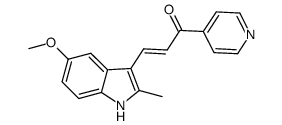| In Vivo: |
MOMIPP (80 mg/kg; i.p.; once daily; for 15 consecutive days) shows moderately effective in suppressing progression of intracerebral glioblastoma xenografts[2]. Animal Model: Athymic CrTac:NCR-Foxn1 mice (female, 7-8 weeks)[2] Dosage: 80 mg/kg Administration: i.p.; once daily; for 15 consecutive days Result: Suppressed progression of intracerebral glioblastoma xenografts. |
| In Vitro: |
MOMIPP can induce intense macropinocytosis, leading to methuosis in cultured glioblastoma cells at low micromolar concentrations[1]. In U373 and Hs683 cell lines, 3 µM for MOMIPP induces cell vacuolization[1]. MOMIPP (10 μM) causes early disruptions of glucose uptake and glycolytic metabolism. MOMIPP selectively activates the JNK1/2 stress kinase pathway, resulting in phosphorylation of c-Jun, Bcl-2 and Bcl-xL[2]. Western Blot Analysis[2] Cell Line: U251 cells Concentration: 10 μM Incubation Time: 4 h or 24 h Result: Activated the JNK stress kinase pathway. |
| References: |
[1]. Margaux Colin, et al. Dysregulation of Macropinocytosis Processes in Glioblastomas May Be Exploited to Increase Intracellular Anti-Cancer Drug Levels: The Example of Temozolomide. Cancers (Basel). 2019 Mar 22;11(3):411.
[2]. Zehui Li, et al. The JNK signaling pathway plays a key role in methuosis (non-apoptotic cell death) induced by MOMIPP in glioblastoma. BMC Cancer. 2019 Jan 16;19(1):77. |






















